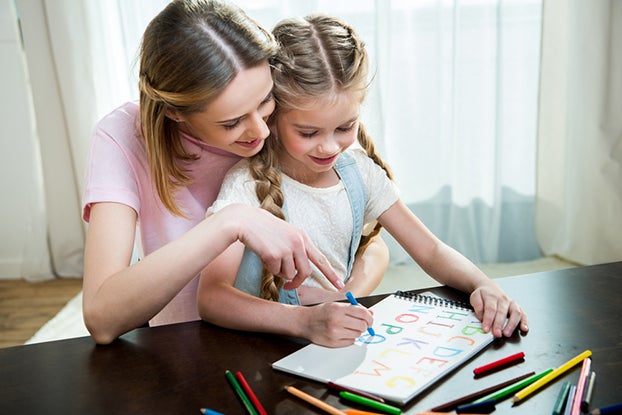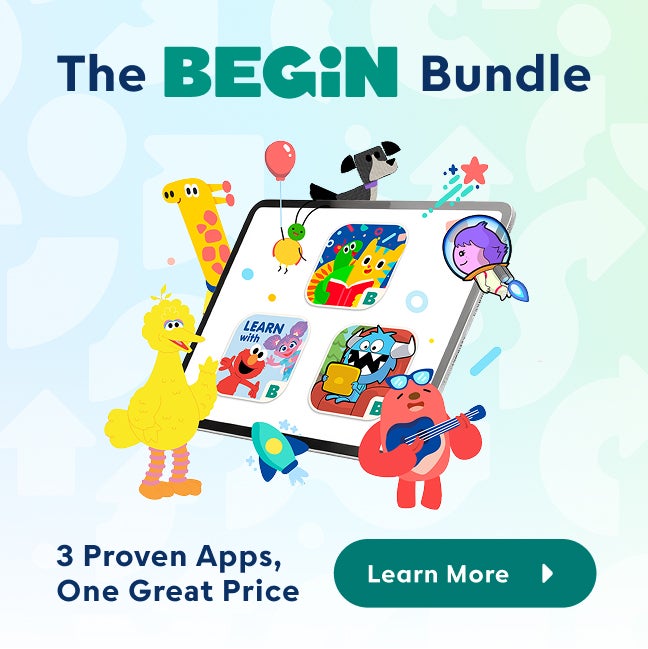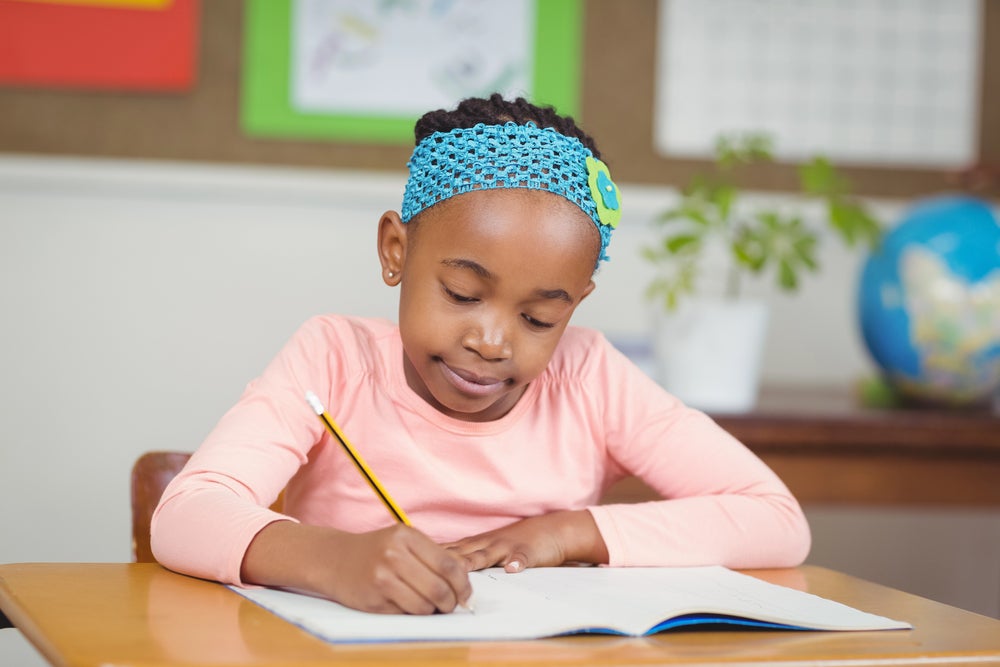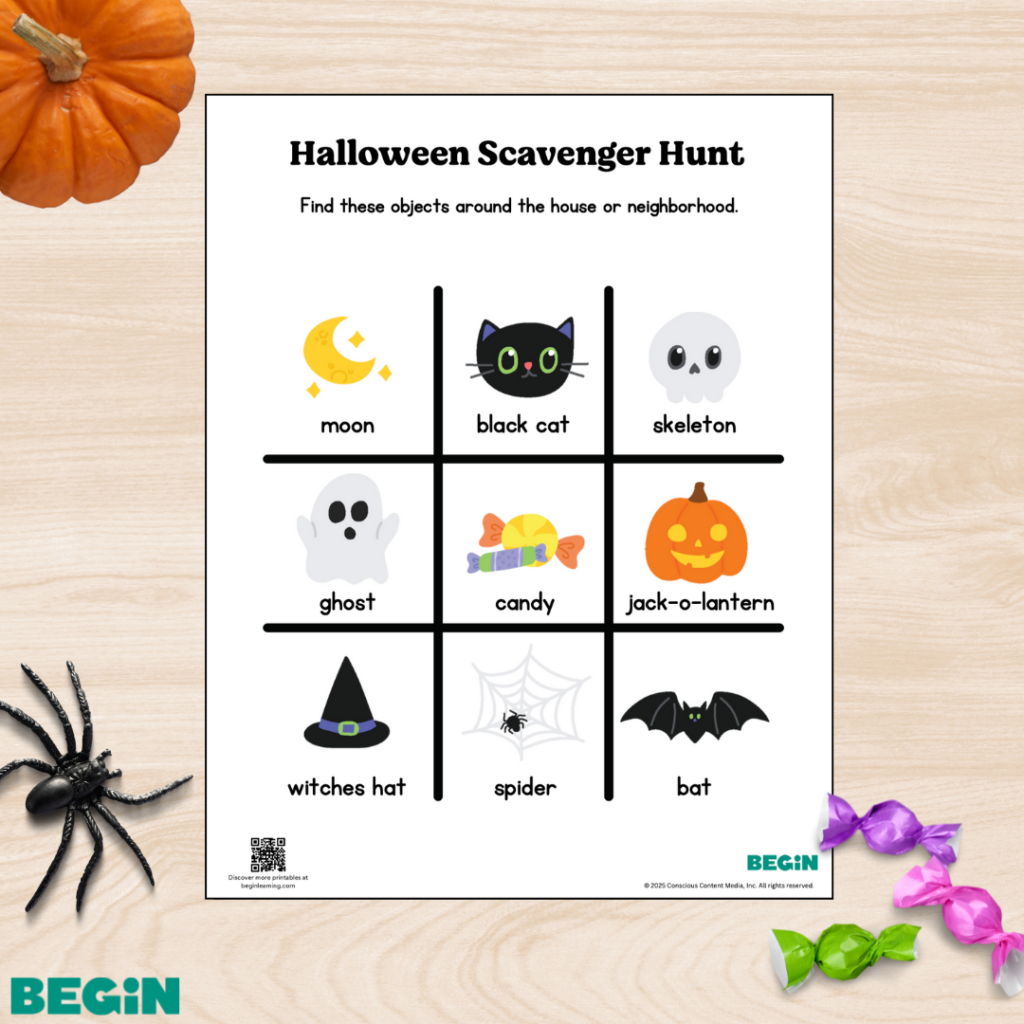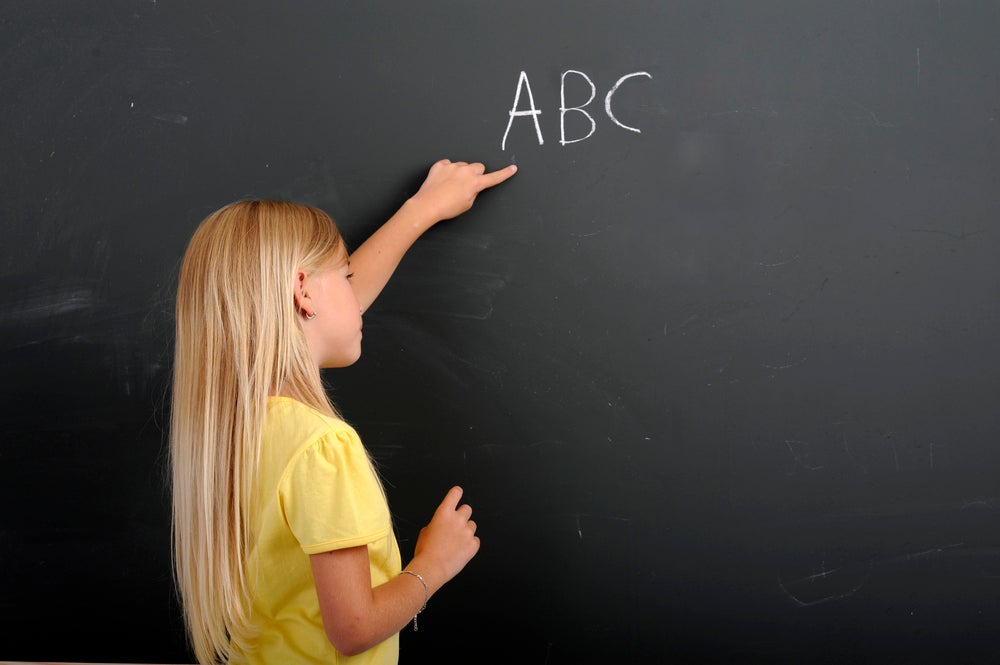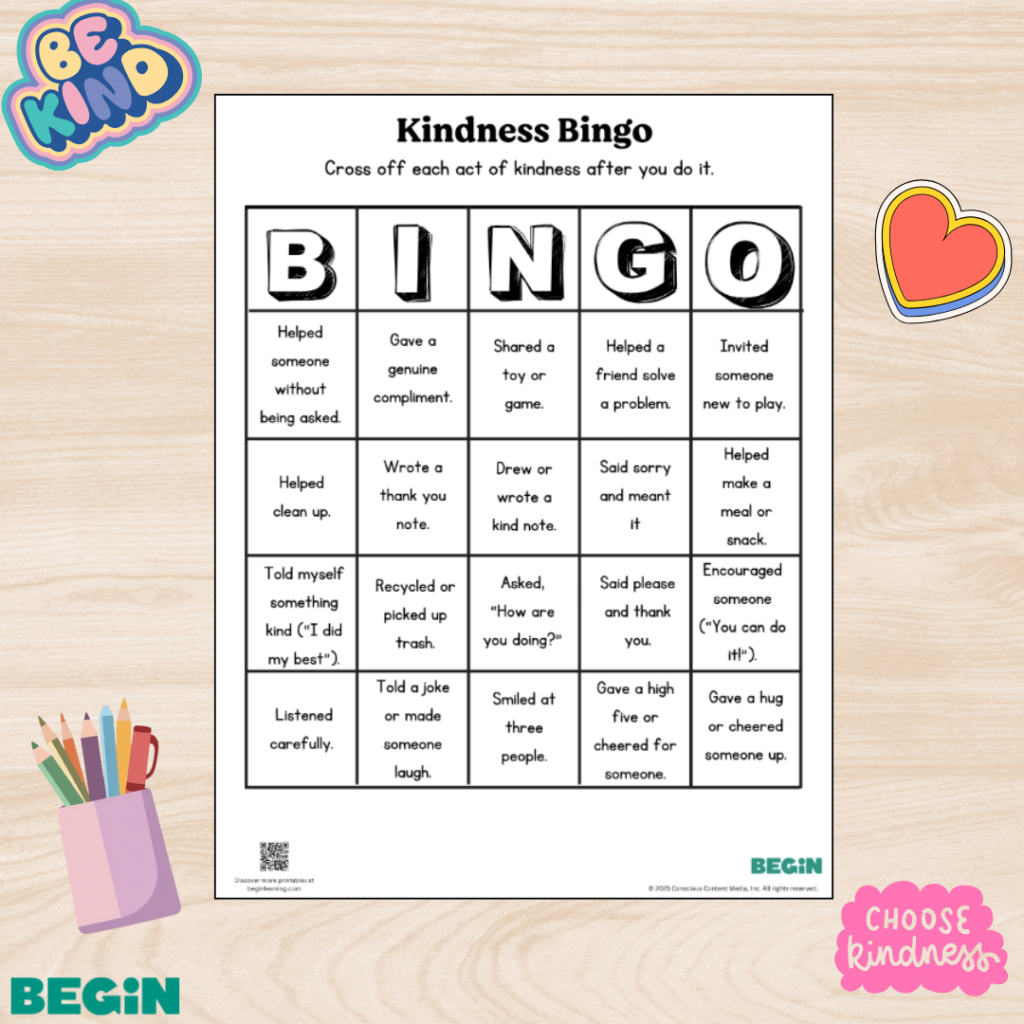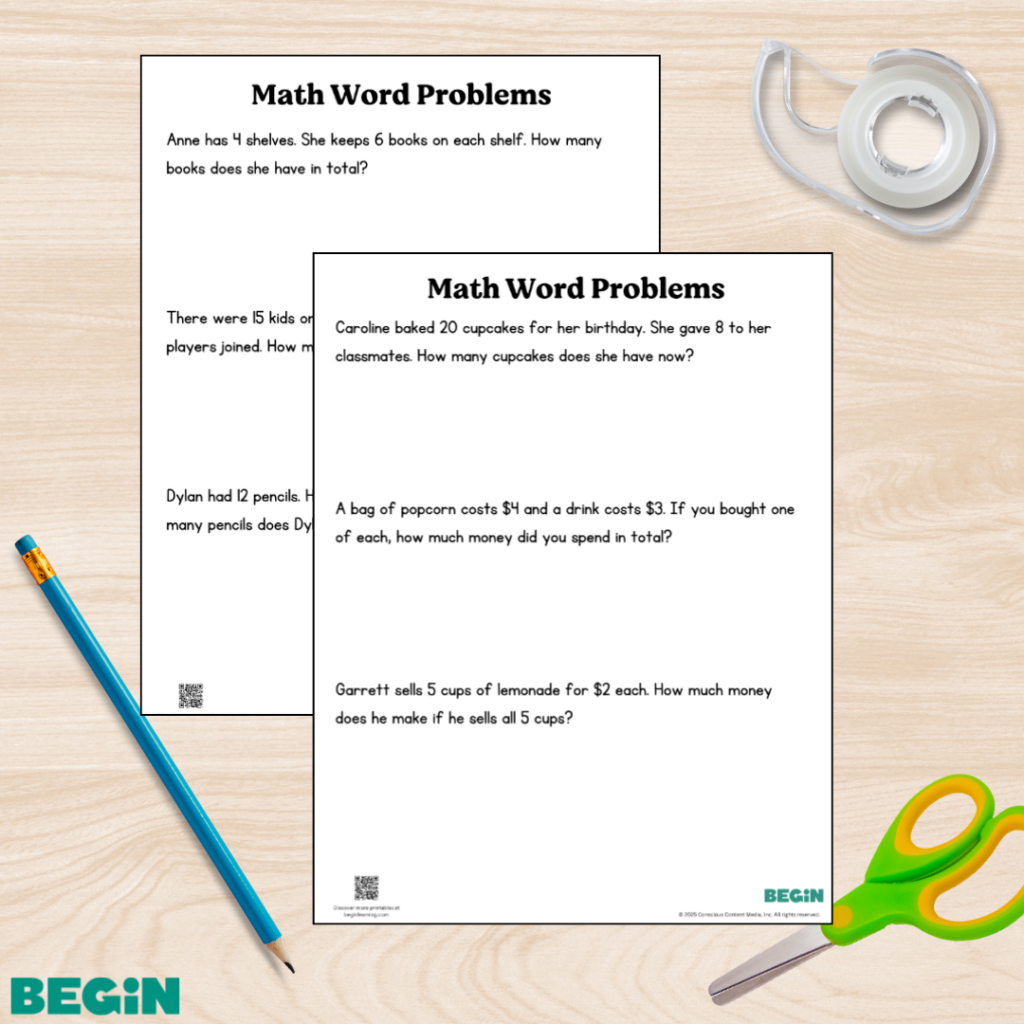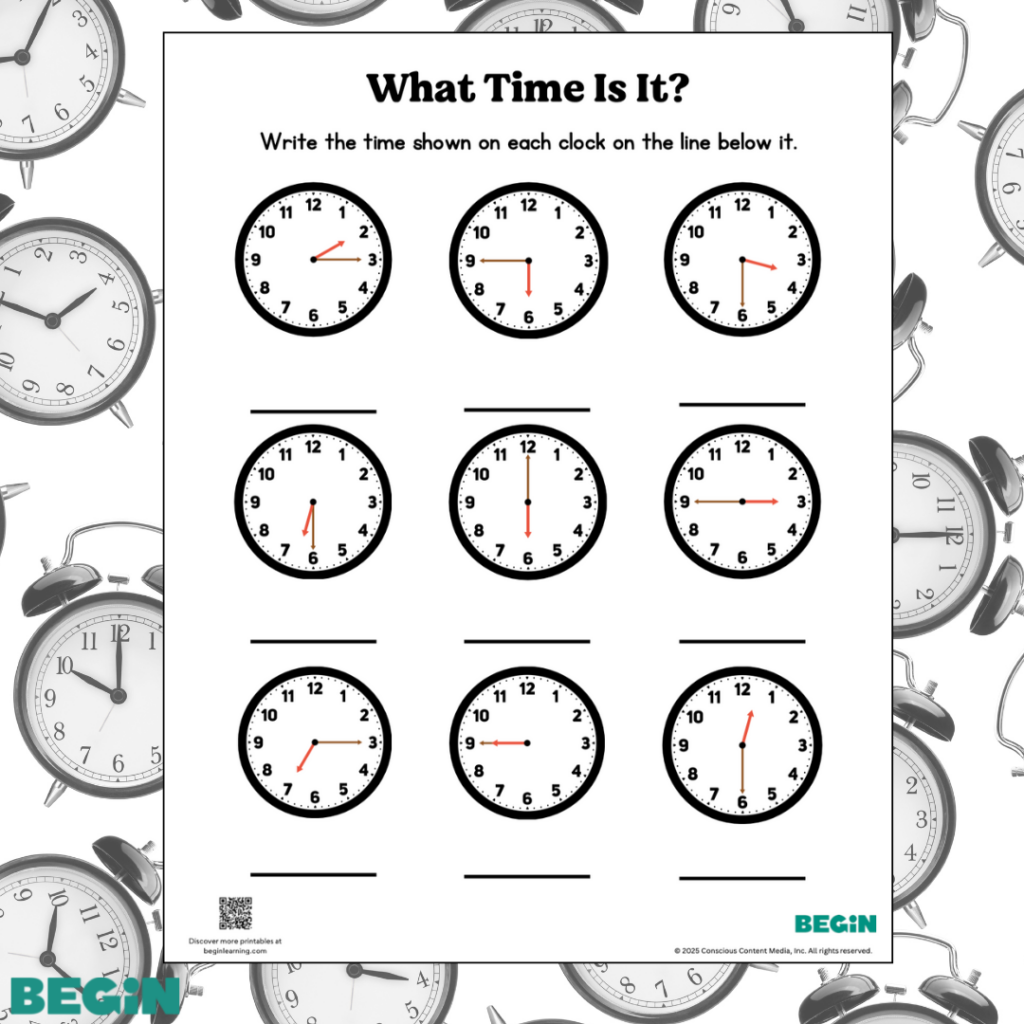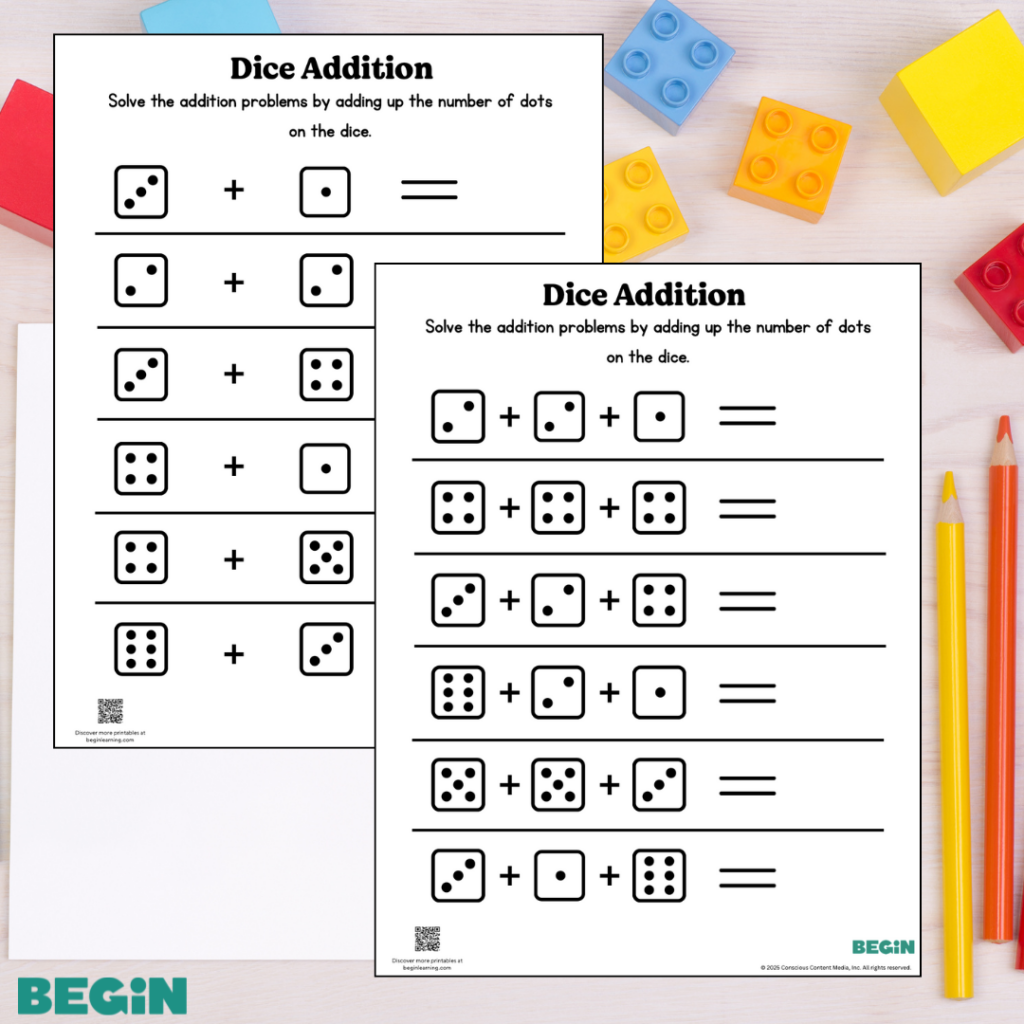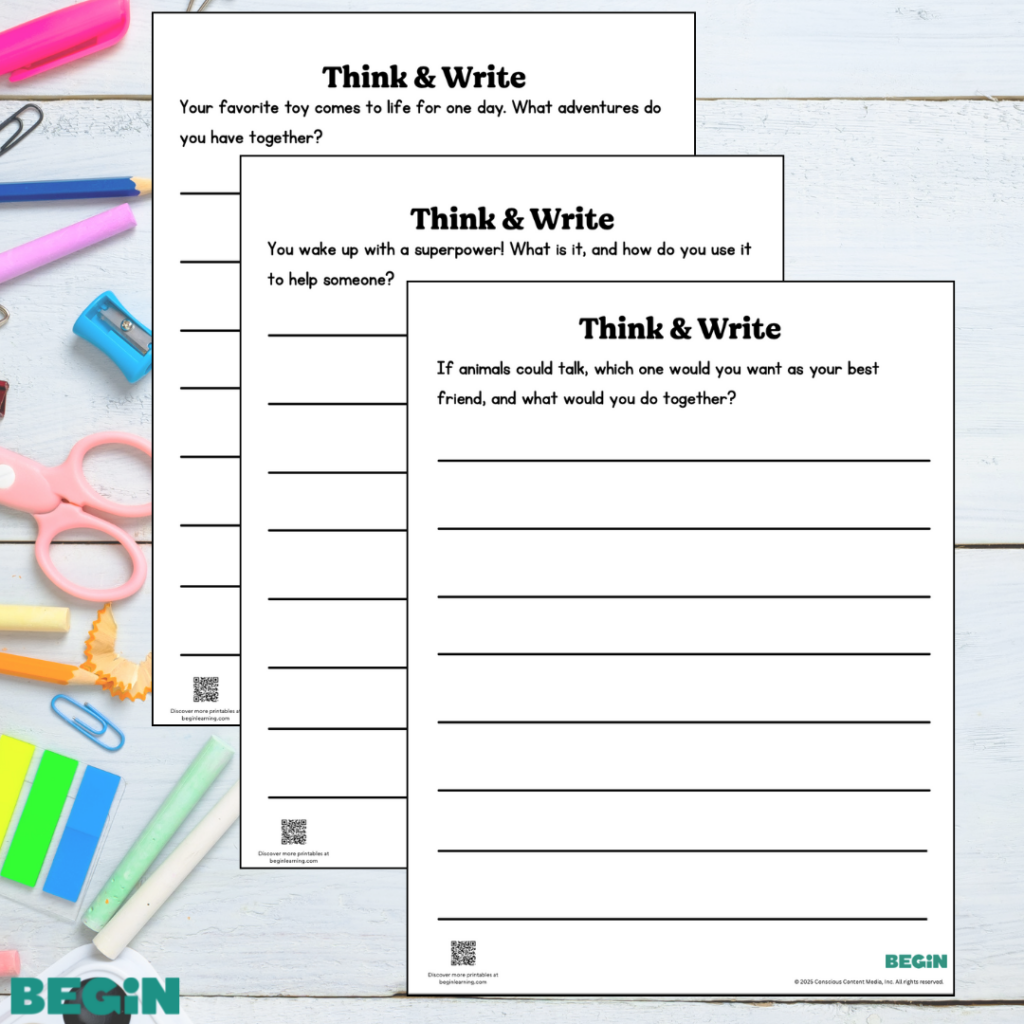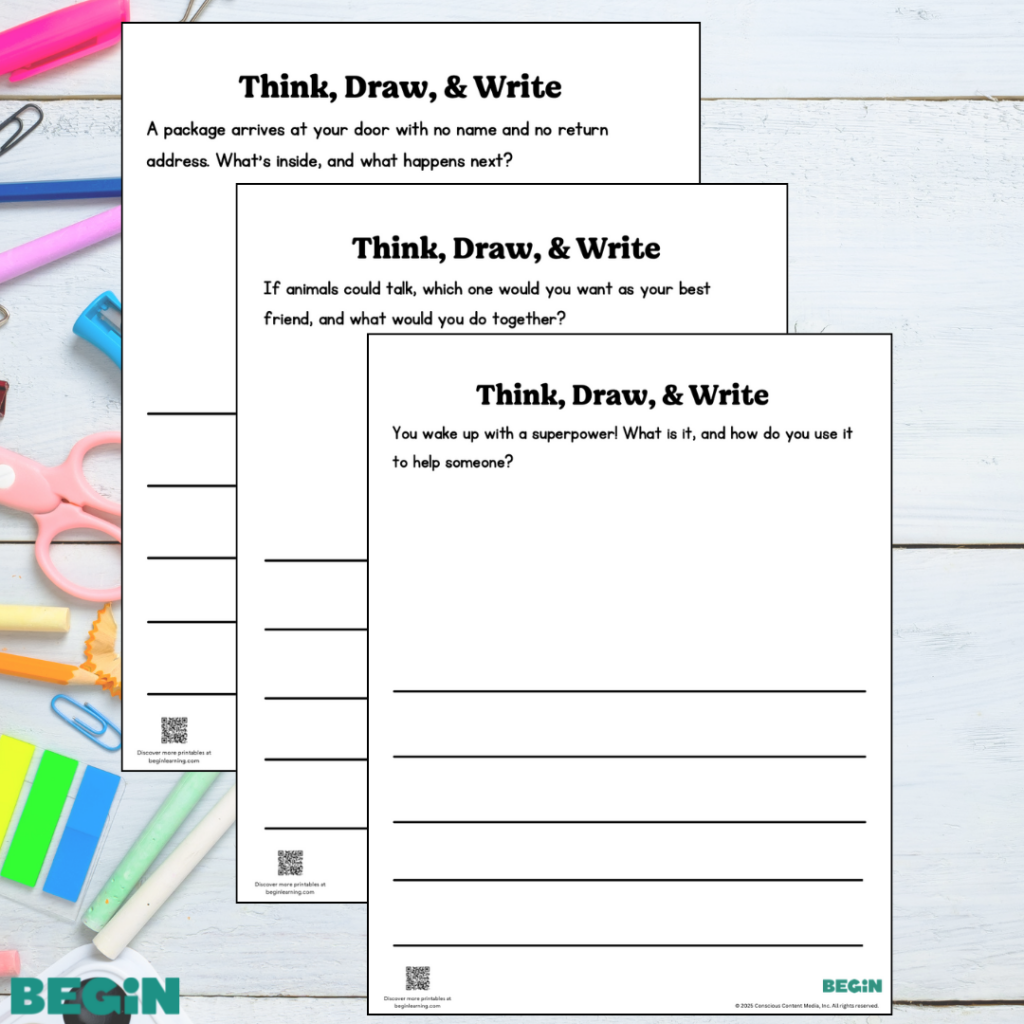Is your child showing an interest in learning their ABCs? Are you unsure of the best approach to help them become confident with the letters in the alphabet? If so, you’ve come to the right place.
Learning the alphabet is an essential Core Skill, one of the 5 C’s that help kids thrive in school and life at the heart of the Begin Approach to early learning. Core Skills like reading and spelling set kids up for greater success in school, and there are lots of ways parents can help teach them!
The Short Cut
- Knowing the alphabet is a Core Skill, one of the 5 C’s that help kids thrive in school and life
- Kids as young as two can start learning letters, but there’s no rush—most kids don’t learn all the letters until age 4 or age 5
- Learning the alphabet helps kids become confident learners and get ready for reading and writing
- Parents can help by focusing on one letter at a time, introducing alphabet songs and books, and incorporating letters into playtime
We have plenty of tips up our sleeves to help you teach your child the ABC’s and, more importantly, have fun doing it!
Keep reading to learn why gaining an understanding of the alphabet is important in early development. Plus, discover our favorite ways to practice this new skill.
Table of Contents
- The Short Cut
- The Importance of Learning the Letters of the Alphabet
- 15 Ways to Encourage Learning the Alphabet
- Tips for Teaching the Letters of the Alphabet
The Importance of Learning the Letters of The Alphabet
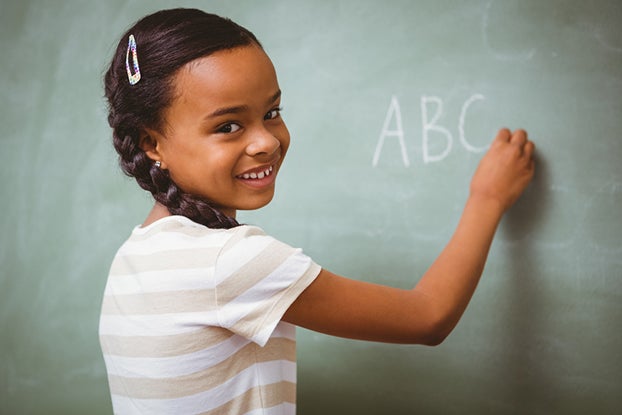
The English language has only 26 letters. Those letters, from A to Z, create words that makeup everything we read and write. This makes learning the alphabet a crucial first step in literacy development.
Familiarity with the alphabet has also been linked to future success in school and beyond. Children with a strong foundation in letter recognition and sounds tend to have an easier time with language acquisition, reading comprehension, and academic achievement.
But, seeing letters in their written form can be confusing for young learners. Plus, aside from learning the letter names, you also want your child to connect the sound of each letter to its written form, as this is crucial for learning the alphabet in its entirety.
Knowing the sounds associated with each letter in the alphabet helps children build a solid foundation for a variety of tasks—from reading activities to writing activities—and helps develop confident learners.
Children are often eager to learn the alphabet—after all, it’s a developmental rite of passage. For some children, this will come naturally. But, for others, it might not be as straightforward.
Children who are developing their working memory, or those who have weaknesses in their working memory, can find tasks such as learning the alphabet frustrating. While this might be disheartening to see, don’t worry! There are ways to overcome it.
Teaching the letters with short, hands-on activities can help. So can making sure your child is ready.
When to Teach Kids the Letters in the Alphabet
Start working on the alphabet with your child early, around age two or three. That way, they have plenty of time to become familiar with the letters before starting school.
However, it’s important to go at your child’s pace. Some children may not be ready to learn the alphabet until they’re three or four years old, while others might be interested sooner. Keep an eye on how they react to the activities.
If they seem uncomfortable rather than interested or they back off, it’s best not to rush them.
If this is the case, try sticking to simple activities—such as singing alphabet songs, reading alphabet books, and having magnetic letters available to play with—and hold off on more complex activities until they’re ready.
The key to making learning the alphabet a fun activity is to keep things playful and engaging! With that in mind, take a look below at our favorite ways to help your child learn the alphabet.
15 Ways to Encourage Learning the Alphabet
1) Read Alphabet Books
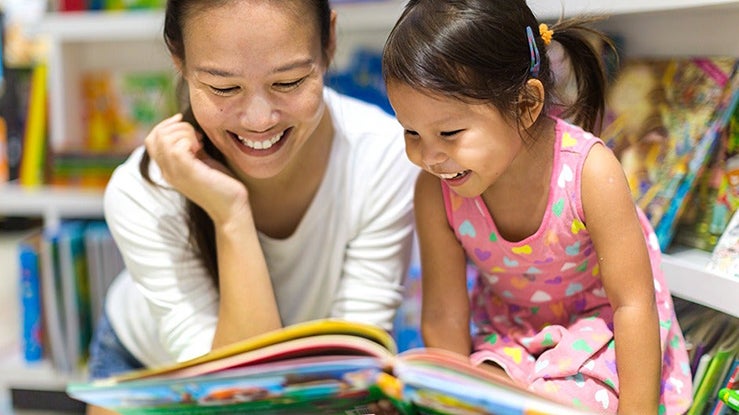
Reading alphabet books with your child is a great way to expose them to the uppercase and lowercase versions of each letter of the alphabet. The more opportunities your young learner has to identify letters, the better!
Look for alphabet books that have bright, colorful pictures with the letters printed in a large, bold font to make it as simple as possible for your child to memorize.
Having each letter singled out and associated with a particular picture (for example, a picture of an apple for the letter “A”) helps children focus on one letter at a time.
Try reading alphabet books together during their bedtime routine to help your child associate reading and learning with positive feelings. By starting your child’s reading journey in a positive way, you’re setting them up for success.
2) Learn the Letters of Important Names
Since your child has known their name for some time now, it makes sense that one of the first written words they should learn is their name.
You can start by teaching your child the individual letters in their name. As they become more familiar with the written version of their name and they’re able to match the sounds to the letters, try adding the names of loved ones into the mix.
Family members like Mom, Dad, Grandma, Grandpa, siblings, and pets are a great place to start!
3) Choose a Letter of the Day
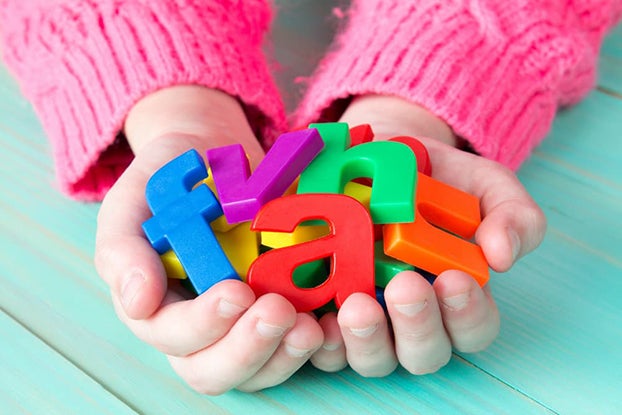
As we mentioned earlier, the thought of memorizing 26 letters that each have an uppercase and lowercase version can feel very overwhelming—not only for your child but also for you. That’s 52 different symbols to remember!
It can be helpful to pick a “letter of the day” to focus your learner’s attention on. Try focusing first on letters with names similar to their sounds.
For example, the letter “B” and its sound are connected, whereas a letter like “H” is more difficult to grasp because it’s not pronounced the same or similarly to its name.
Once you’ve chosen your letter, see how many times you can spot it as you go about your day. Draw your child’s attention to street signs, words on food packaging, and phrases that come up in their favorite books or television shows.
Anytime you can incorporate learning the alphabet in a fun way and make a game of it, take advantage of the opportunity.
4) Play with Magnetic Letters
Magnetic letters are a great tool to incorporate into your daily routine when helping your child learn the alphabet.
Simply having a set of magnetic letters on your refrigerator is a good start, as your child will see them regularly. Plus, you can easily have your child practice reciting some of the letters throughout the day whenever you’re in the kitchen making a meal or snack.
For example, if you’re cutting up an apple for your child, you might ask them, “Apple starts with the letter ‘A.’ Can you find an ‘A’ on the refrigerator?”
Another engaging way to incorporate magnetic letters into learning is by hiding them in places your child might not expect and discussing the letter sound when they find it.
Try sneaking a letter into the cutlery drawer, onto their seat at the dinner table, next to their toothbrush—anywhere that they’re likely to come across it. When they notice it, make it a fun game by saying, “How did that sneaky letter ‘B’ get in there?”
Once your child is more familiar with particular letters, you might like to ask them what the letter is, rather than telling them. Try a phrase like, “Wow, that letter must be following you! Which letter is that?”
By repeating simple games like this, you can help your child recognize letters and remember their corresponding sounds.
5) Sing Alphabet Songs

In addition to the classic ABC song, there are many songs available on the HOMER App as well as YouTube and Spotify that can help your child with learning the alphabet.
If your young learner has a favorite educational television show, try searching for songs featured on the show that incorporate learning letters and letter sounds.
If you can’t find the perfect one, make up your own! You and your child will have a great time using silly rhymes and funny sounds to write an alphabet song. And if they’re involved in the process, it’s going to be a project they’re proud of and can’t wait to show off.
You could even come up with a dance to accompany your new song! This is a great chance to get creative with your child and enjoy some fun movement together as well.
6) Incorporate Your Child’s Favorite Toys
What child doesn’t love playing with their toys? Whether it’s trucks or dolls, incorporating your child’s favorite toys into their learning journey is a clever way to help them understand the alphabet.
For this game, you can use your magnetic letters or create your own by writing each letter on a small piece of paper.
If your child has a collection of toy trucks that they love, stick a letter onto the tray of each truck. As your child plays, you can ask them to move the “B truck” or the “C truck” from one place to another. This is great for practicing letter recognition.
You could also incorporate letter sounds into this activity by asking your child to drive the truck with the letter that makes a “buh” or “kuh” sound (for the letters “B” and “C” respectively).
If your child has a set of dolls they play with often, there’s no doubt they each have special names. Try sticking the first letter of each doll’s name onto the toy to help your child recognize and memorize the letters and letter sounds associated with each one.
This is also a good time to introduce the idea of using initials to recognize what belongs to us, as you would with a backpack for school.
7) Play Games with Alphabet Cards
Create your own set of alphabet cards on index cards. Write one uppercase or lowercase letter on each one so you have a set of each letter.
Then, pick out a few letters to practice at a time. With these cards, you can:
- Play Memory
- Hide them and ask your child to find them
- Spell out simple words
- Set them out on the floor and have your child drive a toy car to pick them up
- Create a path of random letters your child can walk down
For each game, have your child say the name of the letters as they interact with each card. This will help reinforce letter names
8) Make Chalk Letters
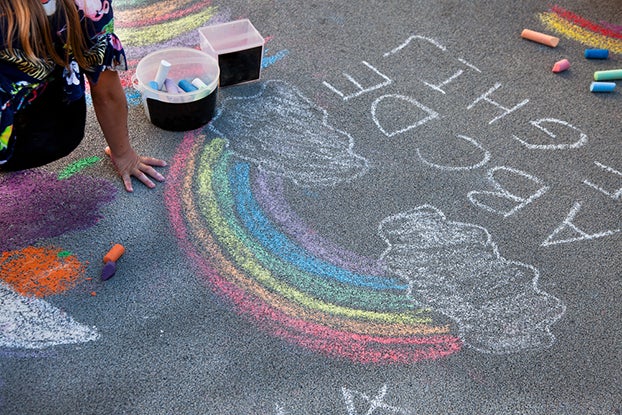
Take your learning outside with sidewalk chalk. Ask your child to write some letters with chalk while you set up a fun activity.
Draw a large grid with 26 squares, one for each letter in the alphabet. Then, have your child jump to different letters as you call them out.
Here are some other fun ways to use sidewalk chalk to practice letter recognition:
- Call out letters for your child to write
- Call out a letter sound and have your child write the letter that makes that sound
- Ask your child to draw things that start with a specific letter
- Write out a word and ask your child to identify each letter
- Write uppercase and lowercase letters and have your child draw a line to match each one
Basically, anything you can do with a pencil and paper inside, you can do with chalk outside. The change of scenery and a new medium can make learning letters feel more like playtime.
9) Go on a Letter Scavenger Hunt
Create a scavenger hunt around the house or outside, where your child has to find and identify different letters. They can look for the letters anywhere, including on the pages of books, on signs, or even in nature.
For younger learners, ask them to find only a handful of letters. You can make it more challenging as they gain confidence in their letter identification skills.
10) Form Letters with Your Body
Can your child make the letter “L” with their body? What about the letter “C?” Go through the alphabet and challenge them to form each letter with their body. They may need to bend and twist, use their limbs, or even stand on one leg to make it happen.
11) Integrate the Senses
Warning: Sensory play can get messy!
Set up a designated area for this activity. Grab a tray or shallow container and fill it with sand or salt. Encourage your child to use their finger or a chopstick to write letters you call out.
Here are some other ways to incorporate sensory play into your letter lessons:
- Spray shaving cream on a tray and ask your child to spread it out and write letters in it
- Build letters out of playdough
- Form letters out of pipe cleaners
- Create an alphabet sensory bin—fill a container with rice, beans, or other filler material and then add your magnetic letters and a few tools and let your child explore
- Use bath crayons and let your child write letters on the tub walls while they bathe
12) Author an Alphabet Book
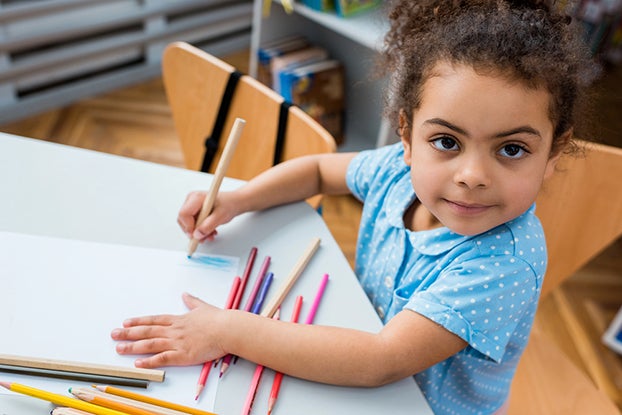
Use simple art supplies to create an alphabet book with your child. They can draw or cut out pictures of objects that start with each letter and write the corresponding letter on the page.
If you’re doing a letter of the day (explained above), consider making one new page daily to coordinate with your other activities. Then your book will be finished by the time you go through all the letters.
Once all the pages are done, bind them with a cover page. Then, let your young author read their book to the rest of the family. It’ll be a fun way to celebrate their progress together.
13) Play I Spy
Turn the classic I Spy game into a letter-finding adventure. Simply say, “I spy with my little eye, the letter that says _.” Then, fill in the blank with a letter sound.
Have your child look around the room and try to find the right letter. Then, let them have a turn spying one.
To change it up, you can also spy:
- An uppercase letter
- A lowercase letter
- All the letters in your child’s name
- A letter that uses only straight lines
- A letter with curved lines
Since it doesn’t require any materials, this is a great letter game to play when you’re out and about. Try it in a waiting room, the line at the supermarket, or anywhere else where there are letters around.
14) Paint Alphabet Rocks
Have your child hunt for 26 smooth rocks (or make it easy and pick up a bag of river rocks the next time you visit the craft aisle).
Once you have the rocks, ask them to paint a letter on each one. They can be as creative as they want with the colors and designs as long as the letter is legible.
After they dry completely, place them in a small basket or bag. Have your child reach in and pull out a stone. Ask them to identify the letter or tell you the sound it makes.
You can also use these rocks for other letter activities, such as spelling simple words or arranging them in ABC order.
15) Turn Your Snacks into Letters
If you don’t mind your little one playing with their food, you can use snacks to help them practice letter recognition.
Some simple ideas include:
- Using alphabet cookie cutters to create fun and edible letters
- Cut pieces of fruit or vegetables into different letter shapes
- Arrange small snack foods like raisins or goldfish into the shape of a letter
- Spray whipped cream onto the top of a snack, in the shape of a letter
- Use pretzel sticks to build different letters
Once your child starts recognizing letter shapes in their everyday life, they’ll be one step closer to mastering the letters in the alphabet.
Tips for Teaching the Letters of the Alphabet
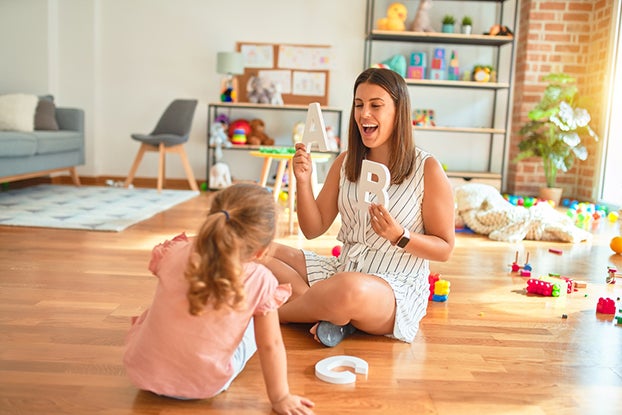
With so many new alphabet activities, it can be tempting to dive right in and try them all. But before you do, here are some helpful tips to keep in mind when teaching the alphabet.
Start with the Uppercase Version
While many children confuse the letters b and d, very few do so with B and D. Starting with the more distinguishable uppercase letters can help your child avoid confusion.
Of course, English is written in sentence case (with capital letters only at the beginning of sentences and on proper nouns.) So, your child will need to learn the lowercase version of the alphabet so they don’t get into the bad habit of WRITING EVERYTHING IN UPPERCASE.
But, in your first introduction to each letter, start with the uppercase letter. Then, show them what the lowercase letter looks like.
Integrate Technology
While the activities listed above were all screen-free, the right technology can be a great tool for teaching the alphabet. For example, the HOMER app by Begin helps toddlers and preschoolers:
- Recognize letters as special symbols
- Gain exposure to the alphabet
- Identify uppercase letters
- Practice letter sounds
It’s a step-by-step pathway to literacy that meets your child where they’re at and takes them to the next level. Plus, it covers other Core Skills like math. Sign up today and try it for free for 30 days!
Make It Part of Your Routine
Short, consistent letter practice sessions are much more effective than long, sporadic ones. Try to make teaching the alphabet a part of your daily routine. For example, you might spend 5-10 minutes after breakfast each day doing one of the activities above.
When you can anchor your letter learning to an existing routine (like meals or bedtime), it’s easier to stick with it. And pretty soon, it’ll be a habit for you and your little one.
Stay Positive
Learning the alphabet can be challenging, so staying positive and encouraging is essential. Praise your child’s efforts and overall progress instead of focusing on mistakes or errors.
There will be days when they seem to have forgotten everything. That’s normal! Be patient and trust that they will eventually learn all of the letters.
Learning the Alphabet with Begin!
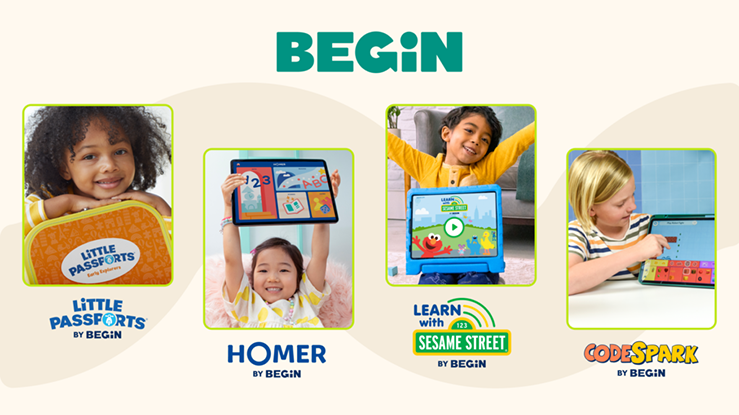
Learning the letters in the alphabet doesn’t have to be overwhelming or boring! With fun activities, you can both enjoy this part of the learning process together.
Begin can help!
Our age- and stage-matched learning membership helps kids build the right skills at the right time—including learning the alphabet. Through our award-winning apps, plus hands-on activity kits and other exciting activities, they’ll have a blast getting ready to read.
Take our online quiz today to see how we can help your family!
